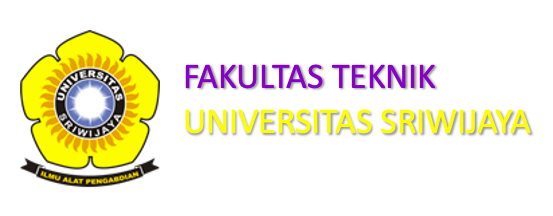PEMBUATAN BRIKET KOMPOSIT PLASTIK POLYETHYLENE, ARANG TEMPURUNG KELAPA, DAN ARANG SEKAM PADI SEBAGAI BAHAN BAKAR ALTERNATIF
Abstract
ABSTRAK: Kehidupan pada era globalisasi menghasilkan peningkatan pertumbuhan penduduk dan ekonomi yang berbanding lurus terhadap permintaan bahan bakar namun berbanding terbalik terhadap ketersediaan bahan bakar fosil, hal tersebut dapat ditanggulangi dengan menciptakan energi alternatif. Plastik HDPE dan LDPE yang berpotensi dalam menciptakan kekumuhan memiliki nilai kalor yang sangat tinggi yaitu 11.207 kkal/kg dan 12.318,4 kkal/kg, namun memiliki kadar zat terbang mencapai 99%. Kombinasi plastik polyethylene dengan biomassa seperti tempurung kelapa dan sekam padi yang memiliki kadar zat terbang yang rendah dan mengandung kadar selulosa dan lignin yang tinggi berpotensi menghasilkan briket sebagai bahan bakar alternatif dengan kualitas yang baik. Tujuan penelitian ini yaitu untuk mendapatkankarakteristik briket terbaik dari sembilan komposisi campuran (plastik polyethylene:tempurung kelapa:sekam padi) berdasarkan standarisasi briket yang ada. Plastik polyethylene yang digunakan yaitu plastik HDPE dan LDPE. Bahan baku arang tempurung kelapa dan arang sekam padi yang digunakan merupakan hasil proses karbonisasi pada variasi temperatur 400oC, 500oC, dan 600oC. Pada penelitian ini diperoleh briket dengan kualitas optimal pada temperatur 600oC, komposisi 20% low density polyethylene:65% arang tempurung kelapa:15% arang sekam padi dengan nilai kadar air 5,97%, kadar abu 7,98%, volatile matter 35,39%, fixed carbon 50,36%, dan nilai kalor 7.419,48 kal/gr.
Kata Kunci: Briket, Tempurung Kelapa, Sekam Padi, Polietilena, Karbonisasi
ABSTRACT: Life in an era of the globalization brings the increasing of population and economic growth which is directly proportional to fuel demand but inversely proportional to the existence of fossil fuel, this condition can be overcome by creating the alternative energy. HDPE and LDPE plastiks which potentially create slums have a high calorific value of 11,207 kcal/kg and 12,318.4 kcal/kg, but contain of 99% volatile matter. The combination of polyethylene plastiks with biomass such as coconut shell and rice husk which contain the little amount of volatile matter and high levels of cellulose and lignin has the potency to produce a good quality of briquette as alternative fuels. The purpose of this study is to obtain the best briquette characteristic from nine compositions (polyethylene plastik:coconut shell:rice husk) based on the standardization. Thepolyethylene plastikused is HDPE and LDPE plastiks. Thecoconut shell charcoal and rice husk charcoal are the result of carbonization process at temperature of 400oC, 500oC, and 600oC. In this research,the optimal quality of briquette were obtained at the carbonization temperature of 600oC with a composition of 20% low density polyethylene:65% coconut shell charcoal:15% rice husk charcoal which has moisture content 5.97%, ash content 7.98%, volatile matter 35.39%, fixed carbon 50.36%, and calorific value 7419,48 cal/gr.
Key Words: Briquette, Coconut Shell, Rice Husk, Polyethylene, Carbonization





